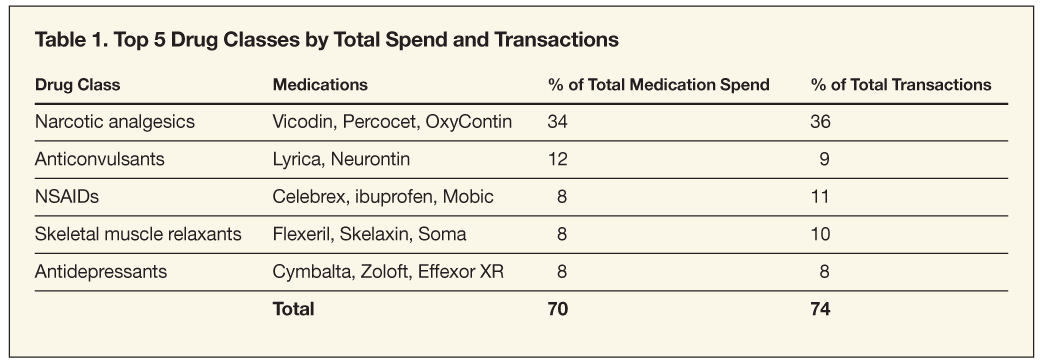Workers’ Rx Costs Rise Despite Injury Rate Decline
Medication spend for workers’ compensation claims continues to increase despite decreases in overall occupational injury rates. Medication costs increased by 5.4% in 2008 following a 3.3% rise in 2007 (Cover Figure), according to findings of the 2009 Annual Drug Trends Report for Workers’ Compensation. The report was compiled and analyzed by PMSI, Tampa, Fla.
Medication spend for workers’ compensation claims continues to increase despite decreases in overall occupational injury rates. Medication costs increased by 5.4% in 2008 following a 3.3% rise in 2007 (Cover Figure), according to findings of the 2009 Annual Drug Trends Report for Workers’ Compensation. The report was compiled and analyzed by PMSI, Tampa, Fla.
Cost of the average workers’ compensation prescription increased to $130.84 from $125.55 in 2007. Occupational injury rates, meanwhile, have declined each year since 2003, to 4.2 cases per 100 equivalent full-time workers in 2007, according to the US Department of Labor’s Bureau of Labor Statistics. Pharmacy costs accounted for 14.2% of total workers’ compensation medical costs.
Higher medication costs were mainly fueled by price increases. The average price of a workers’ compensation prescription increased by 4.2%, with utilization increasing by 1.2%. The report identifies 4 “market influences” on price: average wholesale price (AWP) increases, which averaged 6.1%; new brand-name drug product launches; new generic drug product launches; and factors specific to oxycodone, notably the loss of generic versions of long-acting oxycodone and introduction of 3 new strengths of OxyContin.
Four new medications affecting the workers’ compensation market were launched in 2008. These were Flector (diclofenac) and Voltaren Gel (diclofenac gel), 2 NSAID dermatological products; Pristiq (desvenlafaxine), an antidepressant; and Trexima (sumatriptan/ naproxen sodium), for migraine. Ten generic medications were also introduced: alendronate, bupropion SR, paroxetine CR, ropinirole, dronabinol, zalepion, risperidone, divalproex, omeprazole, and lamotrigine.

Medication use in workers’ compensation is predominantly related to pain management (Table 1). Five drug classes represent 70% of total drug spend and 74% of total transactions. There also has been little change in the top drug classes. Of specific medications used to treat injured workers, Cymbalta (duloxetine) is now the antidepressant prescribed most often because of its FDA indication to also treat nerve pain. OxyContin leads as the top brand-name medication by total spend (Table 2).

The highest increase in utilization was seen in dermatologics, up 17.8%. More injured workers were using lidocaine (Lidoderm) patches and topical diclofenac products (Voltaren Gel and Flector). The report authors speculate that dermatologics may be seen as an alternative to narcotics for pain and also may have perceived safety advantages compared with oral medications.
As workers’ compensation claims become extended, pharmacy accounts for a greater percentage of medical costs. Injuries more than 3 years old account for more than 80% of total workers’ compensation medication spend. The average duration for PMSI’s book of business was 4.8 years in 2008. Injuries that do not respond adequately to initial medication therapy require ongoing prescription drug treatment.

Over time, there is an increase in the number of prescriptions taken annually as well as an increase in price per prescription. The number of prescriptions and the average prescription price do not start to level off until around year 8 (Figure).
Data for the Cover Figure and in the “Trend of the Month” are from the 2009 Annual Drug Trends Report for Workers’ Compensation. More information is available at http://www.pmsionline.com.